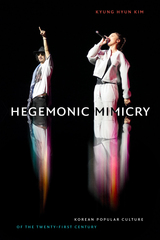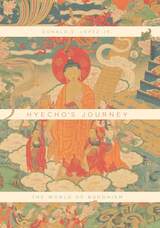4 start with H start with H


This volume presents two histories of the early Korean kingdom of Paekche (trad. 18 BCE–660 CE). The first, written by Jonathan Best, is based largely on primary sources, both written and archaeological. This initial history of Paekche serves, in part, to introduce the second, an extensively annotated translation of the oldest history of the kingdom, the Paekche Annals (Paekche pon’gi). Written in the chronicle format standard for the traditional official histories of East Asia, the Paekche Annals constitutes one section of the Histories of the Three Kingdoms (Samguk sagi), a comprehensive account of early Korean history compiled under the editorial direction of Kim Pusik (1075–1151). Although these two representations of Paekche history differ markedly, the underlying problem faced by both the twelfth-century and the twenty-first-century historian is essentially the same: fashioning a responsible, encompassing, and reasonably coherent history of the kingdom from meager, and often disparate and fragmentary, evidence.
Included in the volume are 22 appendixes on problems in Paekche history; a concordance of proper names, official titles, omens, and weights and measures; a glossary of geographical names; and six historical maps of the kingdom showing its changing boundaries.

These chapters by eight Korea specialists present a new approach to human rights issues in Korea. Instead of using an external and purely contemporary standard, the authors work from within Korean history, treating the successive phases of Korea’s modern century to examine the uneasy fate of human rights and some of the ideas of human rights as they have developed in the Korean context. Beginning with the Independence Club of the late nineteenth century and continuing through to the constitutional and judicial structures underlying the Sixth Republic Government of Roh Tae Woo in South Korea, these papers illuminate the sometimes complex interactions between modern Korean human-rights issues and the legacies of Korean culture and colonial occupation.
The contributors provide a corrective to two common errors: one, an overemphasis on the tension between residual Confucian culture and human-rights concepts; two, the opposite error, a defensive nationalism that gives rise to ill-founded efforts to identify democratic antecedents in the Korean past. Instead, these authors allow each episode in the emergence of Korean human rights thought and action to stand in the context of its own time and of Korea’s modern history. The final sections deal with the usefulness and appropriateness of U.S. policies toward human rights in South Korea and comparatively with the overall issues raised in the volume.

With Hyecho’s Journey, eminent scholar of Buddhism Donald S. Lopez Jr. re-creates Hyecho’s trek. Using the surviving fragments of Hyecho’s travel memoir, along with numerous other textual and visual sources, Lopez imagines the thriving Buddhist world the monk explored. Along the way, Lopez introduces key elements of Buddhism, including its basic doctrines, monastic institutions, works of art, and the many stories that have inspired Buddhist pilgrimage. Through the eyes of one remarkable Korean monk, we discover a vibrant tradition flourishing across a vast stretch of Asia. Hyecho’s Journey is simultaneously a rediscovery of a forgotten pilgrim, an accessible primer on Buddhist history and doctrine, and a gripping, beautifully illustrated account of travel in a world long lost.
READERS
Browse our collection.
PUBLISHERS
See BiblioVault's publisher services.
STUDENT SERVICES
Files for college accessibility offices.
UChicago Accessibility Resources
home | accessibility | search | about | contact us
BiblioVault ® 2001 - 2024
The University of Chicago Press









